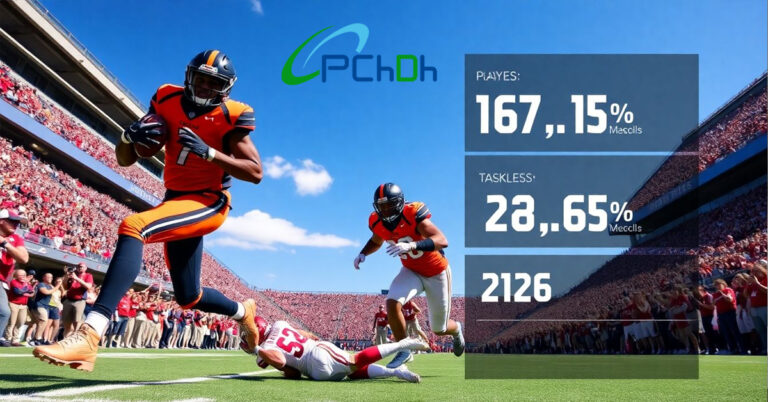The rivalry between the Colorado Buffaloes and Nebraska Cornhuskers runs deep. These teams have faced off many times, creating fierce battles and memorable moments. Player stats reveal much about how each team performs and why they win or lose. Analyzing these numbers helps us understand team strength and future chances. This article takes a close look at key player stats from recent games, highlighting significant performances and how they shape game results. Let’s know colorado buffaloes football vs nebraska cornhuskers football match player stats.
Head-to-Head Player Performance Summary
Overview of Past Matchups
Historically, games between Colorado and Nebraska have been close. Many matches were decided on a single big play or turnover. Players on both sides often shine during rivalry games. Over the past few seasons, standout performances have come from the quarterbacks and running backs. Trends suggest that strong team-ground games and clutch QB plays tend to decide these contests.
Key Players to Watch
Recent stats point to specific stars making big impacts. For Colorado, the quarterback’s passing yards and completion percentage stand out. Nebraska’s running back yardage and rushing touchdowns are key indicators. Watch these players during upcoming games—they could turn the tide at crucial moments. When these stars perform well, their teams normally gain a big edge.

Quarterback Performance Analysis
Passing Statistics
Quarterbacks often lead the charge in victory. In recent seasons, Colorado’s QB has averaged around 250 passing yards per game, with 2 touchdowns and fewer than 1 interception. Nebraska’s QB tends to throw for about 230 yards, with similar touchdown and interception ratios. Completion percentages hover around 65% for both, making precise passing a common trait.
Impact on Game Outcomes
A quarterback’s efficiency truly makes a difference. When a QB connects on high-percentage throws, drives become longer and more threatening. For example, when Nebraska’s QB threw for over 300 yards last season, their offense looked unstoppable. Conversely, turnovers or missed throws lead to lost scoring chances. In tight rivalry games, a standout QB performance can be the difference between victory and defeat.
Notable QB Performers
One recent star was Colorado’s quarterback who threw for 300 yards and two touchdowns in a decisive win. Another was Nebraska’s QB, who led a comeback with timely throws in the fourth quarter. Their leadership on the field often influences the game’s outcome directly.
Running Back and Rusher Stats
Rushing Yards and Average
The team’s ground game is equally critical. Colorado’s top rusher averages around 80 yards per game, with a rushing average just above 4 yards per carry. Nebraska’s leading rusher often surpasses 100 yards in key matchups, with some games featuring multiple rushing touchdowns. Critical runs are often the backbone of scoring drives.
Key Rushing Plays
Watch for specific runs that shifted momentum. A long scamper or clutch touchdown run can energize a team. For example, a 50-yard run by Nebraska’s rusher in the third quarter swung the game’s momentum. Such plays are often remembered as game-changers.
Running Back Impact
A successful ground game opens up the passing attack. When Nebraska runs effectively, they keep defenses honest and dominate time of possession. Colorado relies on agility and quick cuts to gain yards. Both teams emphasize rushing to set up their passing plays, which is crucial in rivalry battles.

Wide Receivers and Tight Ends Performance
Receiving Yards and Receptions
Receivers play a key role in moving the chains. Leading receivers usually gather between 60 and 80 yards per game in these matchups. Notable catches include long receptions that set up scoring drives or extend drives under pressure.
Receiving Efficiency
Catch percentage and yards after catch matter. For example, Nebraska’s top wideout might catch 78% of targeted passes, often turning short throws into big gains. Playmakers often convert third-down passes into first downs, keeping drives alive.
Impact of Receivers
Receivers excel in red zone situations, catching touchdowns when it counts most. Their ability to make clutch plays helps win close games. Overall, great wideouts and tight ends can be the difference makers in rivalry outcomes.
Defensive Player Stats and Turnover Contributions
Tackles, Sacks, and Tackle for Loss
Defense may win games when it pressures the opposing quarterback. Leaders typically record 7-10 tackles per game. Defensive linemen often tally 2-3 sacks, disrupting passing and rushing plays alike. Linebackers are vital, shutting down runs and covering short passes.
Interceptions and Forced Fumbles
Turnovers often swing results. Nebraska’s linebacker had a game-changing interception last season, leading to a score. Colorado’s safety forced a fumble that sealed the game late. Defensive players who make plays on the ball shatter momentum for opponents.
Defensive Impact on Player Performance
Strong defensive stats boost team confidence. Good tackling and forced turnovers keep opponents from scoring. When defense steps up, it’s usually reflected in better overall team performance.
Special Teams Highlights and Player Contributions
Kickoff and Punt Return Stats
Special teams can surprise teams with big returns. Nebraska’s returner averages 25 yards per kickoff return, providing excellent field position. Colorado’s punt coverage often pins opponents back deep in their territory.
Field Goal and Extra Point Accuracy
Clutch kicks make big differences. For example, a field goal in the final seconds might be the game-winner. Recent stats show both teams having around 90% accuracy on field goals, making special teams reliable assets.
Special Teams Impact
Special teams set the stage for offense and defense. Big returns, pinning opponents inside the 10-yard line, and reliable placekicking can tip games in either direction. Coaches emphasize these units greatly during rivalry games.
Expert Insights and Recent Trends
Football analysts highlight that quarterback play and rushing defense dominate recent stats. Emerging trends show teams focusing more on balanced attacks and aggressive defense. Many coaches now tailor their strategies based on players’ standout stats, aiming to maximize strengths.
Actionable Tips for Fans and Coaches
Fans can watch key players’ yards and turnover records to guess game flow. Coaches should focus on their players’ recent stats like completion percentage or rushing yards to prepare game plans. For future matchups, tracking red zone efficiency and turnovers can offer clues about potential winners.
Conclusion
Player stats provide a deeper understanding of the Colorado vs Nebraska rivalry. From quarterbacks throwing precise passes to defenders forcing turnovers, individual performances shape game outcomes. As both teams develop, analyzing these stats helps predict future results. Staying aware of key players’ recent performances keeps fans and coaches ahead of the game. The rivalry’s thrill remains high, with each player bringing their best to earn bragging rights. Keep watching these stats—they tell the real story behind each game.


